

| Home | For sale | Site map | Contact information | Guest book |


 Vorsatzfernrohr
M.G. Zieleinrichtung Vorsatzfernrohr
M.G. Zieleinrichtung
 |
|---|
| A
lifesaver! This article is about a small optical periscope with no magnification that was developed midway into the war, and issued as part of the sight system for the heavy machine guns. The reasoning behind it was never directly to improve the weapon system in any way, but to protect the gunner manning it. A lifesaving device! 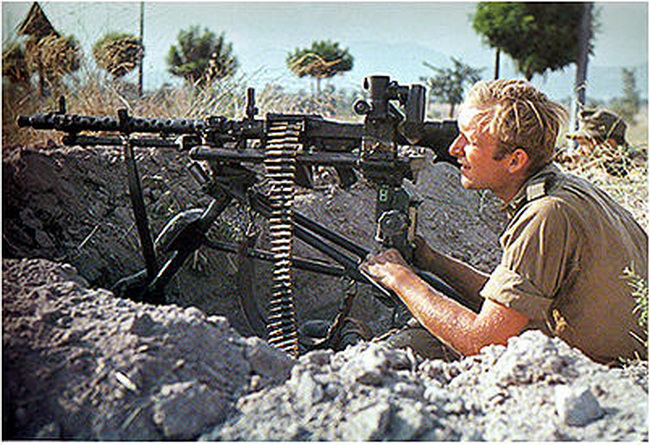 A very rare color photo of a sMG set up in Africa. It is a MG34 on a Lafette 34 with a MGZ sight and a Vorsatzfernrohr. Note that the gunner has moved the eye shield from the MGZ to the Vorsatzfernrohr. The tactical use of the sMG (schwere Maschinengewehr, Heavy Machine Gun) was one of the key elements to success in the Wehrmacht, both in the offensive and defensive role. Their "modern" sMG was a standard light machine gun mounted on a Lafette (tripod). To enable the full potential of the sMG in the long-range direct fire and indirect fire support roles an optical sight was mounted on the Lafette. This would stay in relative limbo, while the MG and the recoil sledge would travel back and forth during firing. The optical sight was mounted in parallel and slightly above the MG on the Lafette. 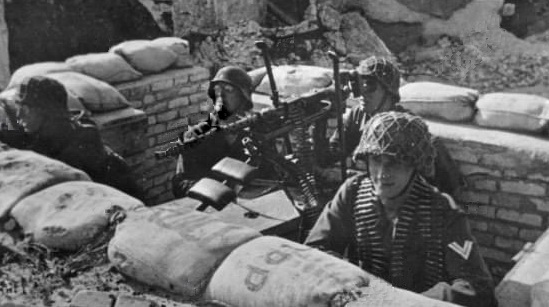 The Lafette itself would normally be placed in a concealed position, which offered some protection to the gunner and the rest of the crew. But no matter how good a firing position was, the inevitably highest point of it would be the gunner’s head. The first type of optical sights used on the Lafette was the Maschinengewehr Zieleinrichtung (MGZ), Machine Gun Sight Device, sometimes also abbreviated MGZE. 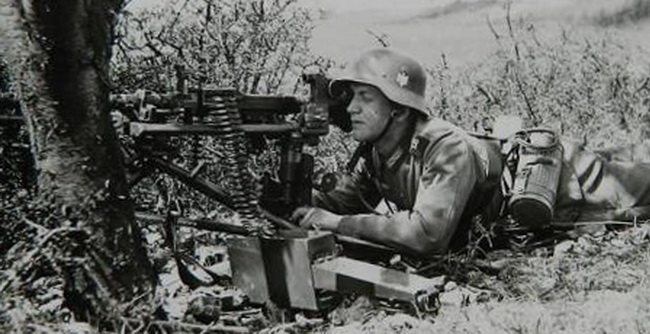 Since these sights were in shorter supply than the Lafettes, the WW1 ZF12 (Zielfernrohr 12) was also used as a stop-gap measure. 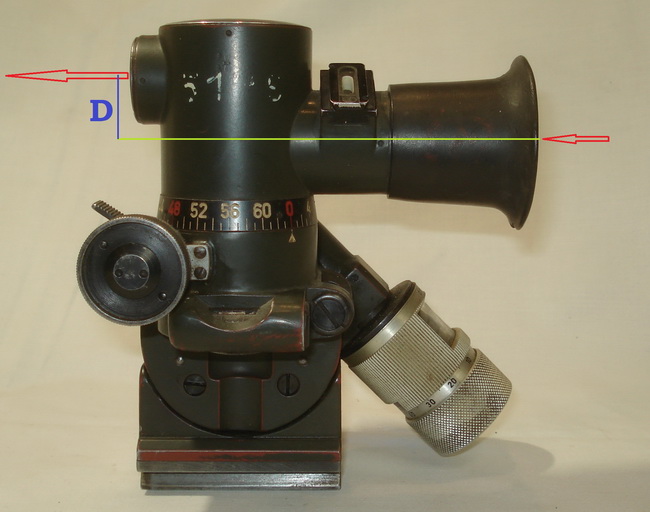 M.G. Zieleinrichtung (J 24901). The blue line is the Delta-height. The very design of these scopes offered a Delta-height of a mere 1,8 cm (less than an inch), that is the difference in height from the ocular (where you look in) and the objective (the lens). Simple statistics must have shown that the sMG gunner had a higher rate of head wounds than the rest, simply because he was the one most exposed to enemy fire out of the sMG crew. As a remedy to this, two new pieces of equipment were announced simultaneously. Organizational
chart for
the
Allgemeinen Heeresamt of the Oberkommando des Heeres. Click on the
picture above for a full-size view. The "Inspektion 2, Infanterie" - office of the Waffen Abteilungen, part of the Allgemeinen Heeresamts under the Befehlshaber des Ersatzheeres officially announced two new pieces of equipment at the same time. The announcement was printed in the Allgemeine Heeresmitteilungen on the 10th of November 1942. First of all, a new improved scope for the Lafette was introduced, named the Maschinengewehre Zieleinrichtung 40 (MGZ 40). This had, among other improvements, a larger Delta-height. The other new piece of equipment was the Vorsatzfernrohr (attachment telescope), which in fact was a small add-on periscope, with no magnification, that would enable the sMG gunner using the old MGZ to keep his head lower while operating the sMG. The complete regulation is printed below, with a translation to English. I prefer to use the German names in the article, so a translation to English of the names is only done in the heading.
Comments to the text announced in the Allgemeine Heeresmitteilungen: This regulation is clearly divided in two sections, but they both address the same need/problem for a lower head-height! I will analyze them individually. 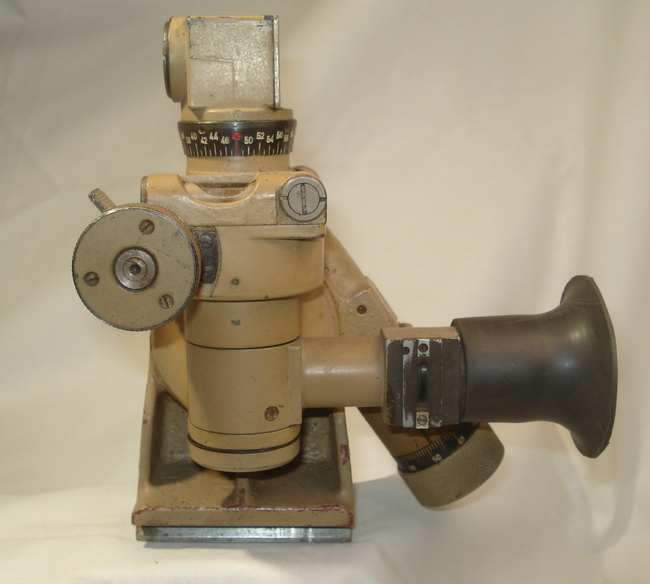 M.G. Zieleinrichtung 40 ( J 25602). Note the much-improved Delta-height compared to the MGZ above. Part I. The introduction of the "M.G. Zieleinrichtung 40". It will replace the old M.G. Zieleinrichtung in production, and will be issued as the need arises. It will not replace the M.G. Zieleinrichtung already in use. To remove any doubt, the old model of sight is referred to with its supply number in brackets. The M.G. Zieleinrichtung is J 24901, Infanteriegerät 24901 ("J" is actually "I"). The new M.G. Zieleinrichtung 40 had the supply number J 25602. It had several improvements, like a freely moving ocular, but the main feature specified in the text is the lower ocular height. The Delta-height increased from the mere 1,8 cm (0,7") of the MGZ to a whopping 9,2 cm (3,6") for the MGZ40. A product-improvement designed to save lives! 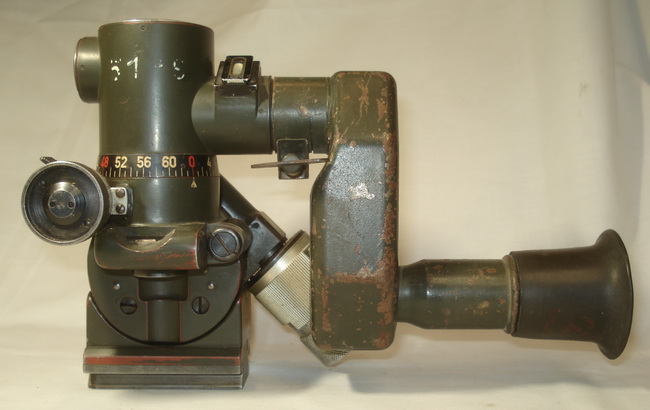 Vorsatzfernrohr M.G. Zieleinrichtung, mounted on the MGZ Part II. The introduction of the "Vorsatzfernrohr M.G. Zieleinrichtung". The full name is only used once in the text. After that it is simply called "Vorsatzfernrohr". This device was obviously considered an accessory to the "M.G. Zieleinrichtung". It did not get an abbreviation; it was not classified as an individual "Infanteriegerät" and the stock number is obviously from a sub-series.  A page from the top secret Gerätliste, issued in July 1943. The Gerätnumber was not a supply number, so it will not match the regulations above; it was probably just a shortlist of what types of items they had in their inventory. Note that the Kurzbenennung (abbreviation) here is deviating from the one in the regulations above. MGZ is now MGZE, and MGZ40 has become MGZE40. No mentioning of the Vorsatzfernrohr can be found, since these were classified as part of the MGZ. The Vorsatzfernrohr is designed for the MGZ, something which is emphasized several times in the text, and at the end of the text it is also clearly stated that it will not be "suitable" for the MGZ40. The lower ocular height was already incorporated in the design of the new MGZ40, and the new smaller ocular lens would make it impossible to attach the Vorsatzfernrohr to the new sight. The total Delta-height for the MGZ with the Vorsatzfernrohr mounted would sum up to 9,3 cm (3,7"), almost the same as the new MGZ40. The Vorsatzfernrohr will be stored and carried in the sight box for the MGZ. In order to do so, boxes must be modified. This will be discussed below in the "Transport" section. The Vorsatzfernrohr will be distributed with the MGZ already in stock when these are issued through the supply system. 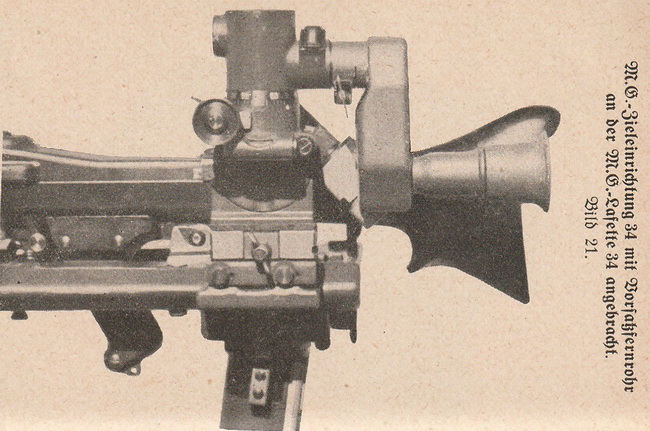 Construction According to the "MG34 u. MG42 als leichtes M.G. und schweres M.G." by Butz, dated April 1944, the Vorsatzfernrohr consisted of the following parts: -Einblick (ocular) -Ausblick mit Flügelmutter (collecting lens with wing-screw) -Gehäuse (body) A page from the Butz handbook gives the basic instructions for use. Note the white painted maker's code "blc" of Carl Zeiss, a maker that probably never manufactured these. More about that later... The construction of the Vorsatzfernrohr is rather simple. The body is made of pressed sheet metal, with one side covered by a lid. The Einblick and Ausblick tubes are both soldered to the body. A shaped strip of sheet metal has been welded inside the opening of the body with 6 supports for the screws holding the lid. Since the shaped strip is too thin to be threaded, 6 "L" shaped nuts have been soldered underneath the supports. The cover plate has a grove running around the edge and seats a thin rubber gasket. The lid is attached to the body with 6 tiny screws. The Ausblick tube is partially cut along the length, and a bracket has been welded on each side of the cut to provide a mounting point for a nut and a long-stemmed wing screw. Turning this screw by hand the circumference of the Ausblick tube will decrease and ensure that the Vorsatzfernrohr stays put when attached to the MGZ. At the Einblick end a steel O-ring has been crimped in (the largest ring visible on the outside) as a seat for the lens. The lens and a rubber O-ring are again held in position by another steel sleeve that has been crimped in position (the two smaller rings). The external rings thus created added friction to hold the eye shield of the MGZ. A bracket has been welded to the inside of the lid. This holds a prism, which in turn holds a upward pointing lens. The prism is held by a small bracket fastened with two screws to the bracket attached to the lid. The prism is isolated with cardboard most of the places where it comes in contact with the steel. At the Ausblick end there is no lens, just a prism with a rubber seal around the light opening. This is held by a bracket which in turn is held to the body by 5 screws. 4 of these can be seen inside the Ausblick, while the 5th is visible on the body, just outside the Ausblick. The size of the Vorsatzfernrohr is held at a minimum, the outward contours following the functions of the "innards", except for the side towards the lid, which has been kept at straight angles to ease manufacture and ensure a tight fit of the lid. The overall length has (probably) been determined by two factors: The Vorsatzfernrohr should fit inside the MGZ box, and it should offer the same kind of protection as the new MGZ40. The Delta-height of the MGZ + Vorsatzfernrohr is 9,3 cm, while the MGZ40 has a Delta-height of 9,2 cm on its own. The soldered joints between the body and the tubes, as well as the screws, have all been waterproofed by touch up paint after assembly. The Vorsatzfernrohr can be considered "weatherproof", but probably not "watertight". Assorted pictures of the innards showing the two prisms and the collecting lens. The fourth optical part is the ocular, which can only be viewed from the outside. Enter the "Vorsatzfernrohr zur M.G. Zieleinrichtung 40" No documentation in regards to the approval of, or need for, a Vorsatzfernrohr MGZ40 has so far been found, but it appears in the MG42 manual published 15. September 1944. As it was, a sMG gunner equipped with a MGZ with a Vorsatzfernrohr and a gunner with a MGZ40 would be exposed to the same amount of unfriendly fire (head at the same height). But by now the MGZ was no longer being manufactured or issued, and the results with the issue of the Vorsatzfernrohr must have been showing good results. A new contract was placed with Spindler & Hoyer, which appears to have been the sole manufacturer, for a Vorsatzfernrohr that would fit the MGZ40. This added another 7,5 cm to the Delta-height for a total of 16,7 cm (6,6 inches). The difference between the two models is an inserted spacer-ring that makes up for the smaller ocular of the MGZ40, and that the company code was now pressed into the sheet metal of the lid during manufacturing. More about markings very soon.... One small problem arises with the Vorsatzfernrohr zur MGZ40 though. An extra eye shield is needed, as the one on the MGZ40 sight can't be used on the Vorsatzfernrohr, due to the smaller ocular on the MGZ40 sight. 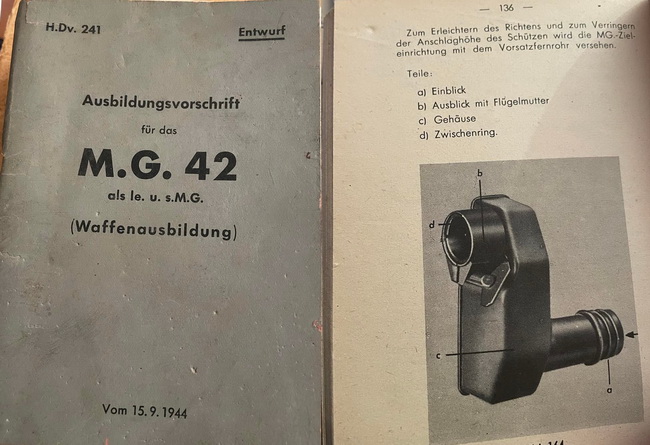 (Picture courtesy of Folke Myrvang) One of the two known German documentations identified (until now) describing the Vorsatzfernrohr zur MGZ40. Note that the description of the parts now has an extra spacer ring added; d) Zwischenring. 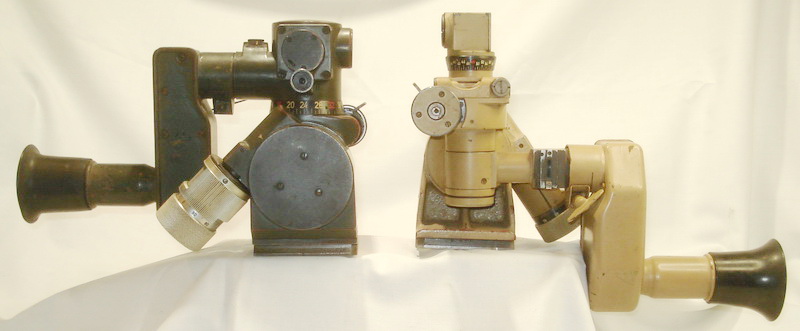 The MGZ versus the MGz40, both with Vorsatzfernrohr. Paint, makers and markings Green was never one of the "standard WH colors", according to the Allgemeine Heeresmitteilungen, but it was used on most of the sights and their corresponding cans up to February 1943. The MGZ and the RA35, to name a few, were both painted green until that date. Production of the MGZ was halted in favour of the MGZ40 sometime well before February 1943, since the MGZ40 scope is quite common to find in dunkelgrau, while the MGZ can't be found in dunkelgelb. Late manufactured RA35s were issued in dunkelgelb. The color specification must have been stated in the Technische Lieferbedingungen (TL), the contract specifications for all orders from the WH to civilian manufacturers. Sadly, no knowledge of the RAL code or the actual name of the color can be found anymore, so it has simply been christened "ordnance green". The early deliveries of the Vorsatzfernrohr were painted ordnance green, to match the MGZ's. 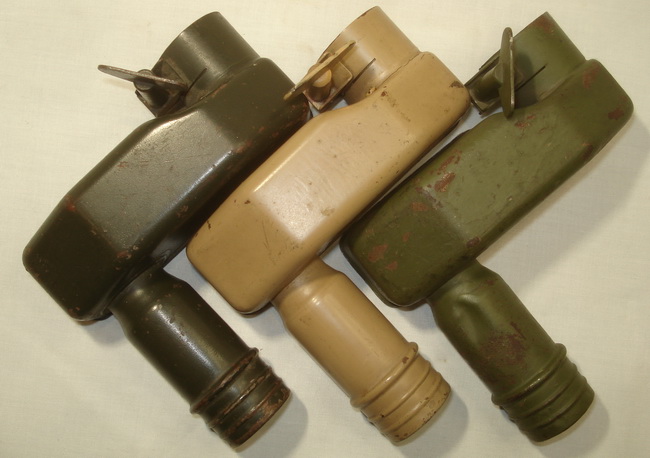 The basic colors of the Vorsatzfernrohr. From left ordnance green, replaced by the dunkelgelb in the middle after February 1943. The right one is repainted in Norwegian army olive drab, the most common color to find today. The Vorsatzfernrohr was painted inside and out, prior to assembly. Some specimens have ordnance green inside, while later manufactured specimens tend to have a red primer only. The Einblick and Ausblick tubes are both painted matt black on the inside to avoid glare from sunshine etc. As mentioned above; seams, joints and screws received touch up paint after the final assembly to keep the Vorsatzfernrohr weatherproof.  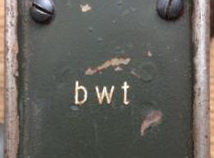 (Picture of bwt courtesy of Tom Ødemark) The above picture contains all the identified manufacturers up until now. I am always eager to learn if someone has manufacturers not listed here!
The code blc has only been observed on pictures in manuals, marked in white paint/ink. (See picture from manual above). It has been suggested that blc designed and developed the Vorsatzfernrohr, but never manufactured it beyond the prototype. The markings consisted of a maker's code in black or blue ink, plus a standard WaA approval stamp with the inspector's number. The two ink stamps were stamped individually. The only known specimens not following this pattern is the one made by cwu, which has a WaA of the square box type and the one made by bwt, which is devoid of any WaA marking. 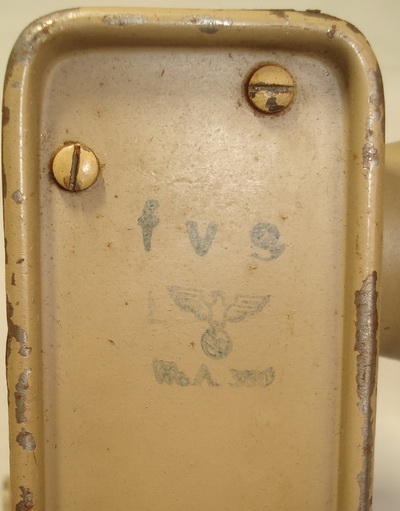 Sometime after February 1943 production changed to dunkelgelb (dark yellow), when dunkelgelb became the standardized color for all WH equipment. The only manufacturer known to have made the Vorsatzfernrohr in dunkelgelb is fvs; Spindler & Hoyer. About 85% of the Vorsatzfernrohr found today are manufactured by fvs and they are factory painted dunkelgelb. 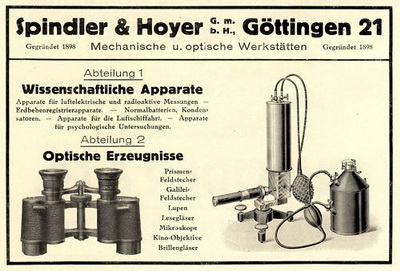 This is also the only known manufacturer of the Vorsatzfernrohr M.G. Zieleinrichtung 40. This device was marked slightly different from the earlier production. The maker's code was now impressed into the lid during production. The WaA approval was applied in ink, as before. The Vorsatzfernrohr MGZ, top, and the Vorsatzfernrohr zur MGZ40 below. Note the new style of marking. Transport, storage and distribution As noted in the regulations from the Allgemeine Heeresmitteilungen dated 10. November 1942, "the Vorsatzfernrohr is carried in the container for the M.G. Zieleinrichtung". But the interior had to be altered for the Vorsatzfernrohr to fit. Drawings showing how this was to be done followed the issue of factory new Vorsatzfernrohr, and the unit armorer was instructed to do the modification. No surviving example of these drawings are known to exist, but the execution and the result is easy enough to document. The interior of the box consisted of trimmed pieces of wood, partly covered with pieces of felt glued to the surfaces in contact with the metal of the scope. A hole had been drilled out of a wood-extension attached to the rear wall to accommodate the lens brush. Two versions of the standard conversion exist. In the first version the whole wood extension along the rear wall is cut off, flush with the existing "slope" of the main wood block. This leaves no room for the brush, which had to be wrapped in the Klarinoltuch and carried in the web loop attached under the lid. The second version is cut vertically, which leaves room at the end of the main block to drill a new hole for the lens brush. The Vorsatzfernrohr will then fit across the end of the box, stored upside down. This will not allow the sight or the Vorsatzfernrohr to be stored with the eye shield on. This must be removed before the sight is placed in the box, and then be stored by its own in the box. This solution must have been "less than satisfactory" for some. An alternative interior modification which is more demanding to perform has been found in several boxes. This modification moves the Vorsatzfernrohr over to the rear wall of the box, and out of the way for the eye shield. The eye shield is still mounted on the sight and not on the Vorsatzfernrohr though. According to the regulations above, the MGZ sights held in stock by the Heeres Zeugämter (Army equipment depots) would be delivered with the Vorsatzfernrohr in modified boxes. The Vorsatzfernrohr zur MGZ40 was (officially) transported in the transport box according to the picture above. No modifications were needed! Note the extra (large) eye shield. 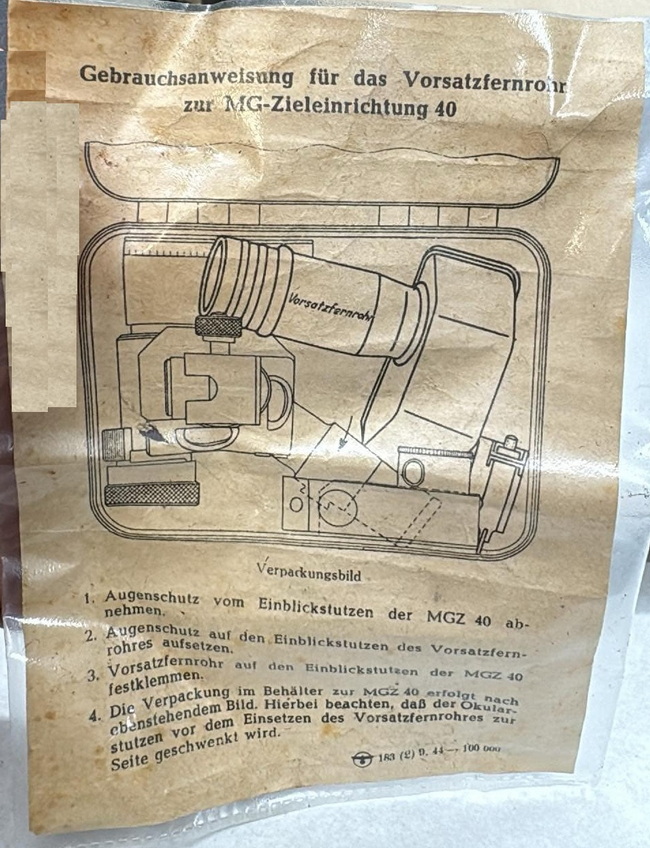 (Picture courtesy of Frederik at fjm44.com) Recently discovered; this one-page leaflet is both a "user manual", as well as a packing instruction, issued in September 1944. It is "unclear" when it comes to the details about the rubber eye, stating it must be removed from the scope, and then mounted on the telescope attachment. But it doesn't mention that those two rubber eyes are different size ones..... I have taken the lazy approach; click on the picture above to view the document in "English", courtesy of Google AI. All MGZ scopes were entitled to a Vorsatzfernrohr. They would be distributed to the units as soon as the Heeres Zeugämter received them from the manufacturers. The time for distribution would be announced according to the "flow of deliveries" from the manufacturers to the depots. 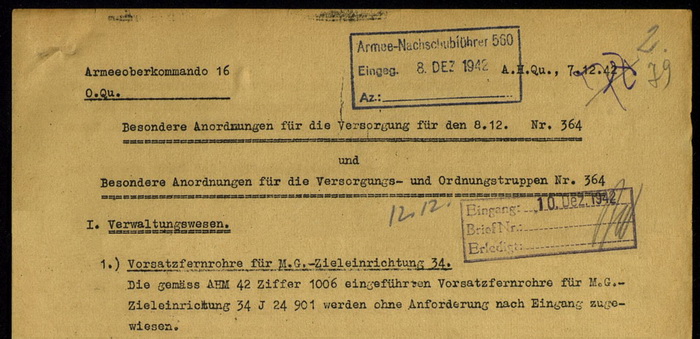 A supply-order from Armeeoberkommando 16, which fought in Northern Russia. This one is dated 7. December 1942, less than a month after the regulations for the Vorsatzfernrohr had been issued. It refers to the regulation above and states that the Vorsatzfernrohr will be distributed without any need for requisitioning, as soon as they arrive. It doesn't say anything about the actual supply situation in regards to the Vorsatzfernrohr. It sounds like a classical "Hurry up and wait!"
Signature is "Oberkommando des Heeres, Chef der Heeresrüstung und Befehlshaber des Ersatzheeres " (Army High Command, Chief of Army Armaments and Commander of the Reserve Army) The second line will denote which office under the Allgemeine Heeresamt (AHA) that issued the order. "AHA/In 2". is an abbreviation for Allgemeines Heeresamt (General Army Directorate) / Inspektion 2 (Infanterie), "II d" denoting the sub-office. "79 a/t" is believed to be an archive code of some sort.
3 weeks later someone in the same office obviously thought better off it, and reposted the message, this time urging the field units to forward their requisitions for the missing Vorsatzfernrohre through the standard supply system. 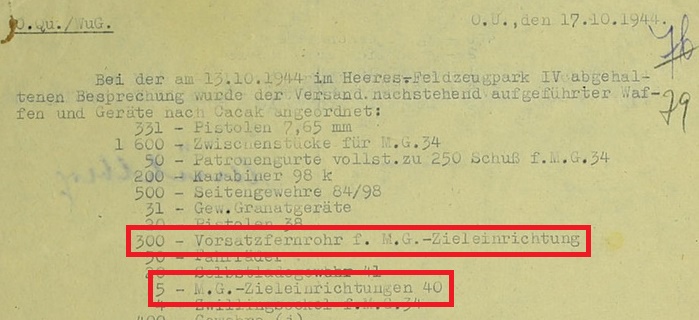 This is a supply order from Heeresgruppe F, Südost, dealing with redistribution of supplies in stock at the Heeres-Feldzeugpark IV in the Balkans, dated 17 October 1944. The supplies listed will be shipped to Cacak in Serbia. By clicking on the picture above you will get access to the complete document. Of interest for this article; the shipment will contain 5 MGZ40. These may or may not have included the Vorsatzfernrohr for MGZ40. It was certainly already introduced and would have been considered part of the sight, but we have no knowledge of the details concerning this yet. The order also lists 300 Vorsatzfernrohr for the MGZ. These would have been distributed to 300 MGZ sights already in service on the Balkans, almost 2 years after the date that the Vorsatzfernrohr was introduced! Sights out of spec The following announcement was recently brought to my attention by a good friend. And it suddenly solves one of the big mysteries concerning the size of the ocular tube on the MGz40. The studied examples of the MGz40 will actually vary in diameter from 25 mm to 26 mm. This in turn leads to the curious fact that only about half of the scopes will accept the attachment telescope. The reason for this has remained a mystery, with no good theories to explain it, up until now!  The opening on the Vorsatzfernrohr für MGz40 with the Zwischenring measures 24,99 mm. The Zwischenring is of course split, and will allow for some widening, but not much. The scope on the left has an ocular tube that measures 25,12 mm. The attachment telescope can be forced on, for a tight fit. The "Zebra" scope in the middle will not accept the attachment telescope at all. The ocular tube measures 25,91 mm, and the attachment telescope cannot be forced on. Time for metal-removal!
This announcement was published in the Heerestechnische Verdordnungsblatt, issue 24, 15th of December 1944. Clearly, some of the scope manufacturers have delivered MGz40s with ocular tubes out of spec. Too large to accommodate the new Vorsatzfernrohr für MGz40. The remedy was to file off the excessive metal to slim it down to 25 mm, minus 0.1 to allow it to fit over the ocular tube. Captured enemy material Another interesting piece of information about the Vorsatzfernrohr is an Allied report dated 20 July 1945 which describes a captured Vorsatzfernrohr for the MGz40. And although the report is slightly inaccurate in regards to the English term (Sight extension for M.G. 40) it is spot on when it comes to the German name for it: "Vorsatzfernrohr fur M.G.Z.40" (only missing the umlaut in “für”). I suspect they must have had access to a German shipping label, instructional sheet or manual not mentioned in the text. The document describes the optical workings of the periscope, and praise it as a "simple design, but ingenious in its method of operation". Since it is already in the Kings language, I have chosen to include it as it is. Simply click on the miniature below to read the full-size document. 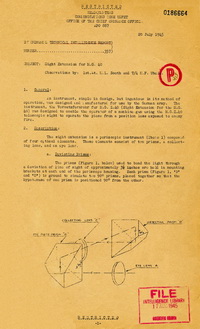
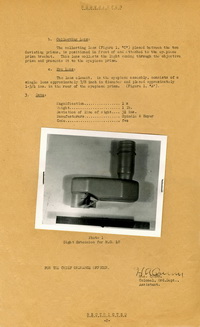 As a follow up to this report, the very same Vorsatzfernrohr (same damage to the paintwork) was included in the Allied intelligence report "Catalogue of German fire control equipment", dated 1 September 1945. 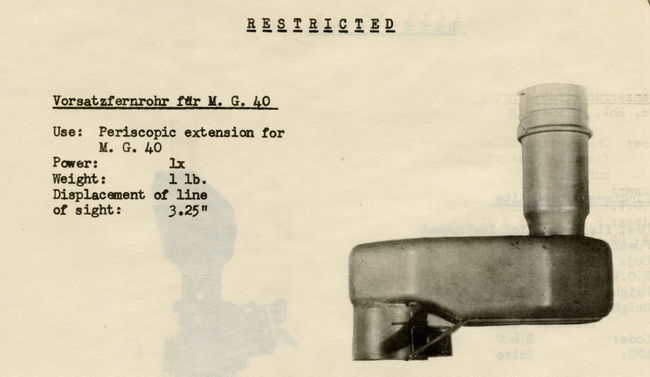 But the name has not improved. They found the umlaut in "für", but lost the "Z".... Combat use The Vorsatzfernrohr was widely distributed and used in the last years of the war. Despite this, pictures of the Vorsatzfernrohr in use are almost non-existent. I have found only three up to now. The first one (in color) can be seen at the start of the article. The second one is a pure gem though, as we know the exact location, the date, the time of day and the unit the men belonged to! The picture was taken by unofficial combat photographer Unterscharführer Ernst Baumann sometime between 12:00 and 13:00 on the 27. April 1944 during Unternehmen Ilse (Operation Ilse). The temperature that day was 16 degrees Celsius / 60 degrees Farenheit. The exact position is hill 188.5, beside a railway line. The target of the operation is the village of Horodolec, in the direction the machine gun is pointing. This is southwest of the city Kovel, Eastern Poland. It was first published in the classic book "Wenn alle Brüder schweigen" in 1975, and again in the incredible book "Unternehmen Ilse" from 2019. 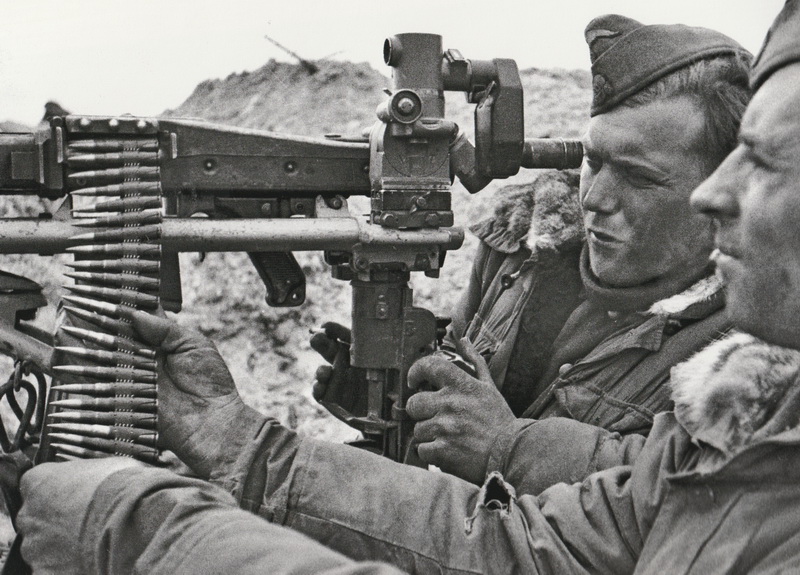 A sMG set up with a MG42 on a Lafette 42 with a MGZ scope. The Vorsatzfernrohr in use. Note that the Lafette straps are missing, and have been replaced by two Tragegurt 34, the support strap for the Patronenkasten. Schütze 2 is ready to feed the machinery, with a satisfied expression on his face. Schütze 1 is adjusting the height, and maybe the traverse. His right hand is grasping the trigger of the Lafette, while at the same time he has a cigarette between his fingers. He looks thoughtful, watching his target through the Vorsatzfernrohr. The men belong to Kampfgruppe Dorr, consisting of what was left of SS Regiment Germania after Cherkassy. They still wear their winter uniforms, but no helmets, so the Vorsatzfernrohr would come in handy as a potential lifesaver. Last comments As stated, only three pictures of the Vorsatzfernrohr in use have been found so far. If any of my readers have copies of other pictures that show it in use, I would be very grateful for any information, and would love to reproduce it in this article. Information regarding any other maker codes would also be most welcome. |
| Home | For sale | Site map | Contact information | Guest book |